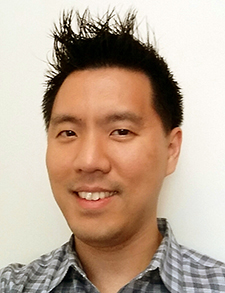
Dr. Kim
Presenter: Chase J. Webber, DO, FACP, Vanderbilt University Medical Center, Nashville, Ky.
Learning is an acquired skill, but the way we are taught throughout most of our education is not the most conducive method for retention. Ebbinghaus’ Forgetting Curve shows that after we are given information in the form of a lecture, there is a sharp decrease in retention that happens in just an hour (approximately 44% of the information given is already lost after an hour, and only 25% of this is left after six days). While one may despair of ever remembering anything, the good news is that spaced retrieval practice improves retention over time. In other words, the more frequently someone encounters the same information, the more they’re able to retain, and overcome the forgetting curve.
As educators on the wards, many people can identify the barriers to effective teaching: time constraints, learner fatigue, cognitive load (there is simply too much information to soak in at one time), and a one-size-fits-all approach to learning. While having a lengthy “chalk-talk” is important and can be effective in delivering information, there can be obvious limitations in what it can deliver.
This brings us to the concept of microlearning, which is “an instructional unit that provides a short engagement in an activity intentionally designed to elicit a specific outcome from the participant”. It requires active engagement by the teacher and learner, it is self-contained (the lesson can stand by itself), and it is “just in time/just enough” meaning it meets the learner at a particular moment when the question comes to the forefront, but not so overwhelmingly as to drown the learner in information.
Microlearning focuses on performance and behaviors. This allows the teacher to meet the learner at the level that is appropriate for them. In the same teaching interaction, the goals for a learner may be different. For a second or third-year medical student, the goal may be to create a prioritized differential diagnosis, while the goal for the senior resident may be to compare the clinical reasoning script that they used with the attendings and have a dialogue about how to refine it.
One way in which Vanderbilt University has tried to incorporate these aspects of learning is by having learners create teaching scripts which in turn have been compiled digitally to create an electronic learning record that is available for the house staff to reference in case of need. Dr. Webber will keep them on Evernote, but whatever electronic note-taking system your institution prefers can be used as well. Some have also used Twitter to keep track of them all. Other online references such as UptoDate, JAMA rational clinical exam, and Google can also help learners get granular, mobile, just-enough resources to inform clinical decisions.
Microlearning can not only help deliver information to learners but also improve one’s care when one is on direct care. Dr. Webber described a situation when he was on direct care which seemed like a relatively straightforward chest pain case. While the patient had a low HEART score, he decided to dig a little deeper and noted that some of his symptoms increased LR+ significantly after looking through www.thennt.com, an online reference that gives quick summaries of evidence-based medicine. Based on his HEART score, his pre-test probability for Acute Coronary Syndrome was 25%, but after looking through www.thennt.com, his posterior probability was 66%. The patient went to the catheterization lab and was found to have a 90% proximal left anterior descending stenosis, which was stented successfully.
Another example given was when a patient had hyperkalemia with electrocardiogram changes. Given the findings, the resident felt it was necessary to give insulin immediately to address the situation but didn’t remember whether to give the insulin subcutaneously or intravenously. Fortunately, a teaching script had been made several months earlier and the resident was able to reference it electronically; it emphasized insulin should be given intravenously. While this could have been looked up in some other way, the existence of the electronic teaching script made the information timely, relevant, and digestible for the situation at hand.
Learners trust their attendings to have a large fund of knowledge but having corroborating evidence is even better. Instead of doling out homework assignments (“Look it up”), Dr. Webber suggests modeling humility: “Let’s look into this question together.” Concepts are fleeting, but cases stick. Patients are our best teachers.
In conclusion, despite our connected age and prevalent technology, medicine has yet to fully adopt social learning theory and microlearning. A team-based learning network empowers teachers and participants to name, identify, and begin to treat diagnoses on day one. Illuminated chalk talks (microlearning with additional electronic references) are the building blocks for future learning.
Dr. Kim is an assistant professor of medicine at Emory University School of Medicine, and Emory University Hospital, Atlanta.